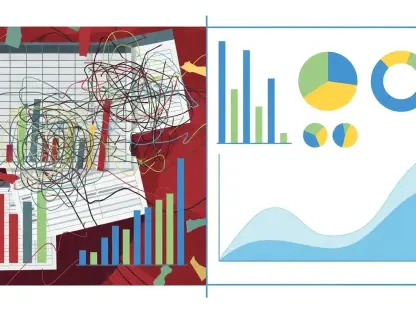The innovative field of additive manufacturing (AM) consistently evolves, presenting new opportunities and challenges for startups. Leveraging cutting-edge tools, such as artificial intelligence (AI) and data visualization, can significantly impact product development efficiency, enabling companies to push technological boundaries in unprecedented ways. The potential for faster prototyping, optimized materials, and reduced costs underscores the transformative power of these advanced technologies in the manufacturing industry. The application of AI and data visualization provides a structured approach to research and development (R&D), particularly for startups with limited initial data. Utilizing these tools, startups can achieve a streamlined research process that quickly narrows down vast possibilities to find the most promising combinations of materials and processes. Beyond just speeding up innovation, these technologies facilitate more precise and reliable outcomes, which are crucial for maintaining competitiveness in this rapidly advancing field.
Transforming Research with Advanced Tools
Startups in the AM sector face unique obstacles, primarily due to their need to develop from a limited knowledge base. Unlike established companies that grapple with vast amounts of unstructured historical data, these nascent firms must quickly build their experimental data. Advanced data visualization tools and AI play an invaluable role in streamlining the research process, even with a sparse initial dataset.
Polyfos 3D Ltd., an Israel-based startup, exemplifies this approach through their development of a simultaneous dual-material polymer printing process. They have pioneered a technique using selective polymerization, merging a durable polymer for parts and a soft, water-soluble polymer for supports within a single print. This innovation dramatically simplifies post-processing and expands application possibilities, significantly enhancing their operational efficiency and capability to innovate within the AM domain.
The challenge for Polyfos, as for many new companies, was not dealing with an overload of unstructured historical data, but instead building data from scratch. This scenario necessitated a quick and efficient collection of experimental data, narrowing down vast combinations of materials and refining the printing process to meet rigorous performance criteria. Their strategic use of advanced tools allowed Polyfos to rise to these challenges and innovate swiftly and effectively.
Strategic Role of Comprehensive R&D Platforms
Critical to Polyfos’s journey has been their partnership with MaterialsZone, which provides a Lean research and development platform. This collaboration enables systematic documentation and optimization of research processes from inception, which is crucial for startups needing efficient data management and experimental precision. The Lean platform divides its functionalities into four main pillars, each playing a specific role in driving forward the research and development.
MaterialsZone’s Lean platform begins with the Materials Knowledge Center, consolidating all data sources into a coherent structure. Tailored to the specific needs of materials and processes, this pillar ensures a user-friendly experience for new team members, enhancing onboarding and maintaining continuous experimental documentation. As Polyfos expanded its team, this centralized knowledge hub ensured seamless integration, enabling all members to access comprehensive and up-to-date experiment records readily.
The systematic documentation facilitated by this platform ensures that no experimental insights are lost and that the entire team remains aligned with the project’s goals and progress. This cohesion is particularly vital for startups that must maximize their limited resources and ensure every step of their research contributes meaningfully to their innovation goals. The Lean platform’s approach is tailored to the dynamic needs of startups, helping them to scale efficiently and effectively.
Leveraging Data Analysis and Predictive AI
The Visual Analyzer tool within the platform revolutionizes how Polyfos performs multidimensional analyses of their research data. By detecting patterns and offering real-time visualization, it supports data-driven decisions, enabling Polyfos to understand experimental progress and results comprehensively. This tool helps in pinpointing critical insights that might be overlooked if relying solely on manual data analysis, thereby enhancing overall research accuracy and efficiency.
Moreover, the Predictive Co-Pilot employs AI modeling to predict experimental outcomes, significantly reducing the need for excessive iterations. This predictive capability allows the team to make quicker, more informed decisions, accelerating development timelines and enhancing overall product performance—advantages crucial for startups operating with limited capital. The AI-driven foresight enables Polyfos to prioritize the most promising approaches, mitigating risk and optimizing resource allocation in their R&D processes.
The implementation of these predictive models does not just accelerate development but also improve the robustness of the outcomes. AI’s ability to learn from data and continuously refine its predictions ensures that each new experiment is better informed than the last, creating a virtuous cycle of improvement that benefits the entire development workflow. It exemplifies how cutting-edge technology can transform formidable challenges into structured, manageable tasks.
Facilitating Efficient Collaboration and Scalability
In addition to robust analytics, the platform’s Collaboration Hub enables secure, cross-departmental collaboration in a real-time, cloud-based environment. This pillar ensures that all data, processes, and insights are accessible across teams, supporting scalability and fostering innovation. The centralized data repository breaks down silos within the organization, ensuring seamless communication and collaboration across different functional areas.
Through these advanced tools, Polyfos efficiently navigated the complexities of developing a dual-material formulation. Their example underscores the significance of comprehensive documentation, enabling a systematic approach to interlinking experiment data, material compositions, and property analysis. This approach not only improves efficiency but also ensures that the knowledge built up over time is consistently accessible and usable for future research and development efforts.
The Collaboration Hub also facilitates adaptation to rapidly changing project requirements by enabling agile team responses. Real-time data sharing and communication mean that developments in one area can immediately inform strategies in another, optimizing overall project outcomes. By fostering an environment of continuous, collaborative improvement, Polyfos is able to stay at the forefront of innovation within the competitive landscape of AM technology.
Innovation in High-Stakes Environments
The dynamic field of additive manufacturing (AM) is continuously evolving, offering new opportunities and challenges for startups. By utilizing advanced tools like artificial intelligence (AI) and data visualization, companies can significantly enhance product development efficiency and push technological boundaries in unprecedented ways. The potential for faster prototyping, optimized materials, and reduced costs highlights the transformative power of these technologies in the manufacturing sector.
Applying AI and data visualization offers a structured approach to research and development (R&D), especially beneficial for startups with limited initial data. These tools enable startups to streamline their research process, swiftly narrowing down a vast array of possibilities to identify the most promising combinations of materials and processes. Not only do these technologies accelerate innovation, but they also ensure more precise and reliable outcomes, which are vital for staying competitive in the rapidly advancing field of additive manufacturing. These advancements underpin the future of efficient, effective, and cutting-edge manufacturing processes.









